What a rejoice yesterday! A rang on the doorbell, the yellow-clothed guy hands over a big, heavyweight parcel: The winches for my new boat arrived! Full of excitement and with a sed up heart rate I opened the cardboard box and a big smile covered my face – here they finally are, the winches. Building the iconic Omega 42 by Peter Norlin is not just any boat, it´s a legacy of the Swedish designer and thus a kind of duty, or commitment, for me as owner and customer as well as for the shipyard building this boat, to live up to Peter´s ideal.
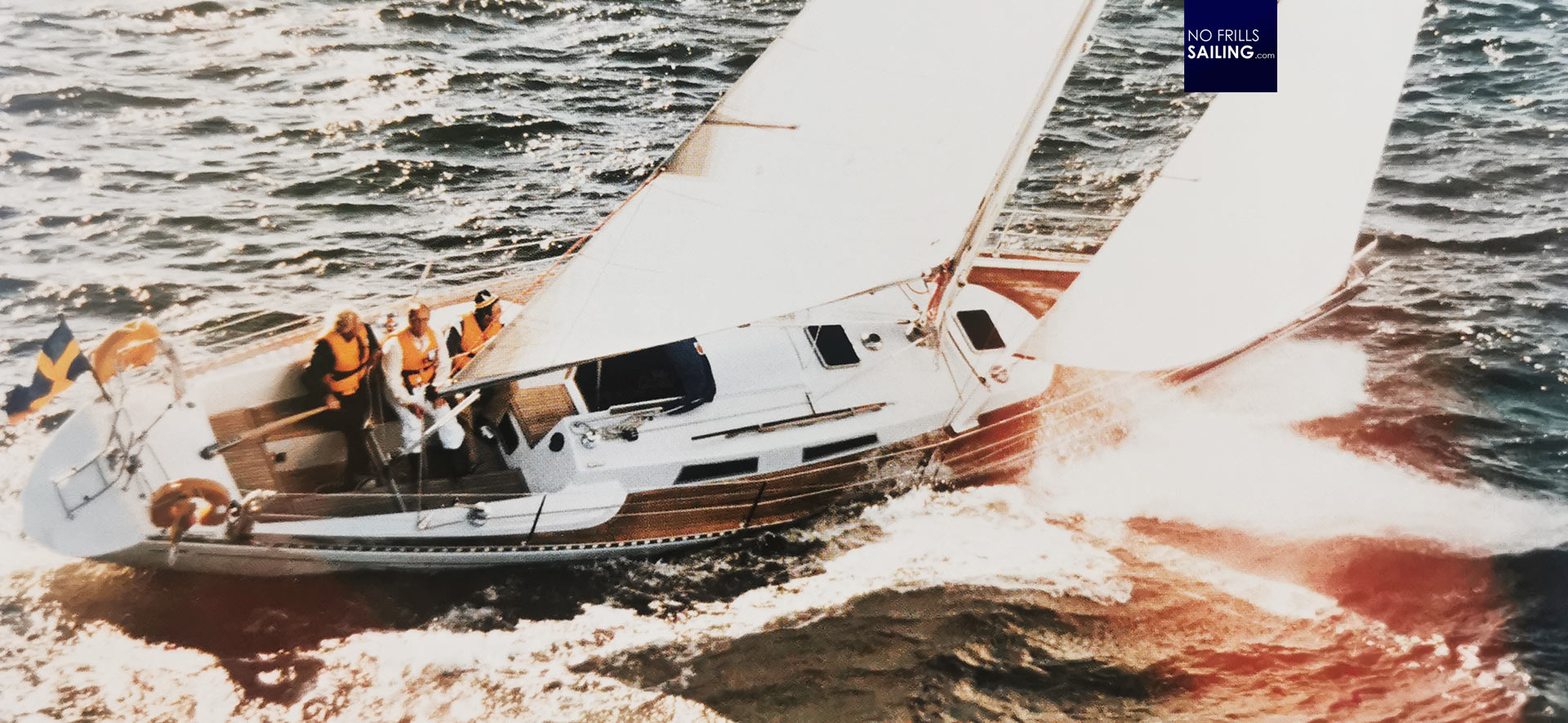
Looking at the old pictures from over 40 years ago, seeing this beauty sail, it´s easy to spot the winches. Silverish twinkling in the Baltic sun, of course, these have to be Andersen winches! Being a Scandinavian yacht through to the bone, for me it was clear from the first day that there must not be any other winch mounted, there cannot be any other material used than the stainless steel drums of Andersen. Let alone the modern black plastic.
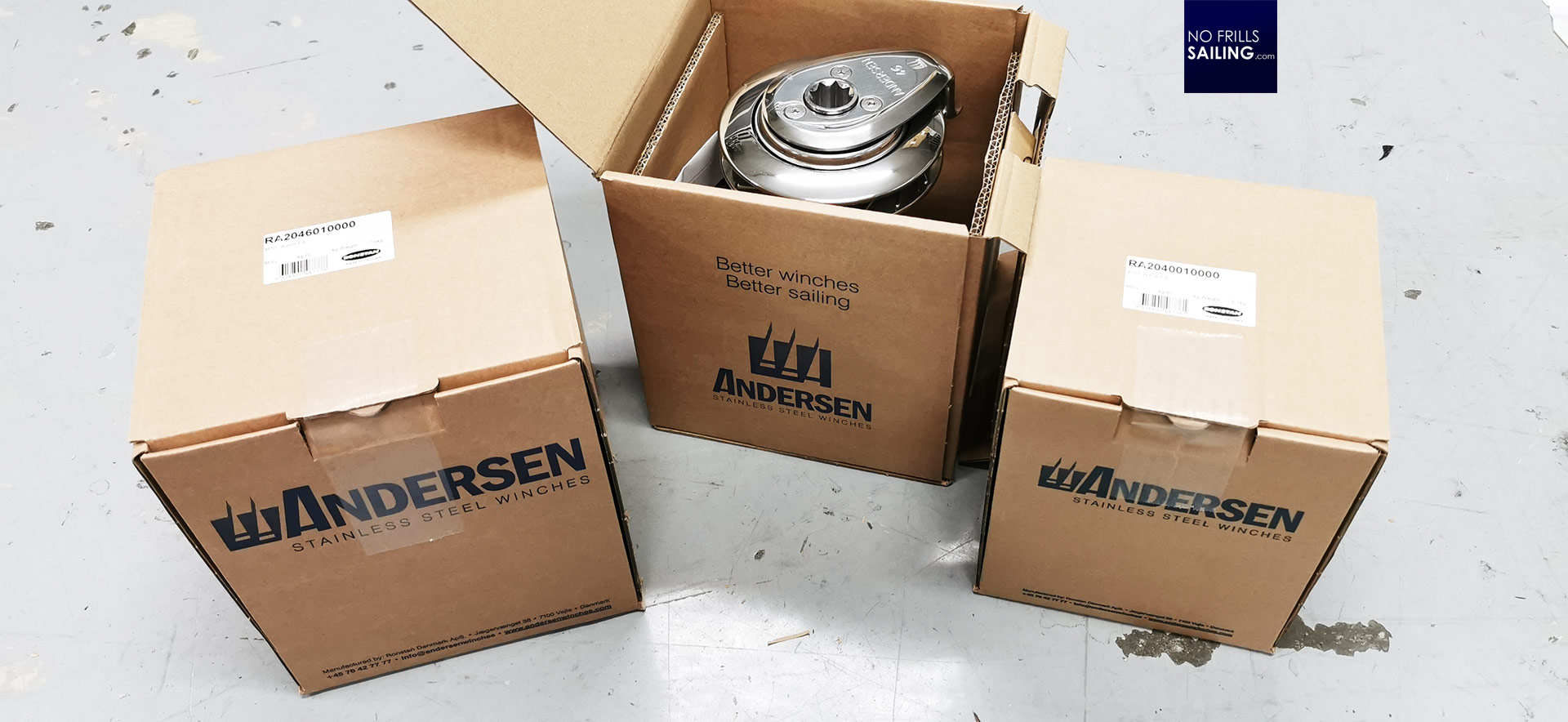
Don´t get me wrong: I have nothing against Lewmar or Harken winches. These are great products with high quality and value for the money. But on a boat like the Omega 42 – I mean, the winches, apart from their daily value as a central “tool” used in sailing for trimming the sheets, the winches are a deciding visual detail for the boat. You cannot hide them or put them away, they are to be seen at all times. Like Emily of Rolls Royce or the Jaguar, the Daimler´s star: They crown the yacht. They must be made by Andersen. So, let´s have a more detailed look onto those beauties.
Of course: Andersen winches!
For ALPHA (that´s finally the name of my Omega 42) I chose to go for the classic sail plan, meaning a self-tacking Jib, not the Genoa, and the main sail. Also, for light wind conditions, Gennaker and Code 0. By the way, in the coming week I will be visiting Quantum Sails again to plan the sails for this yacht, so stay tuned for this surely interesting article as well. So, having this sail plan means that I´d need four winches in total.
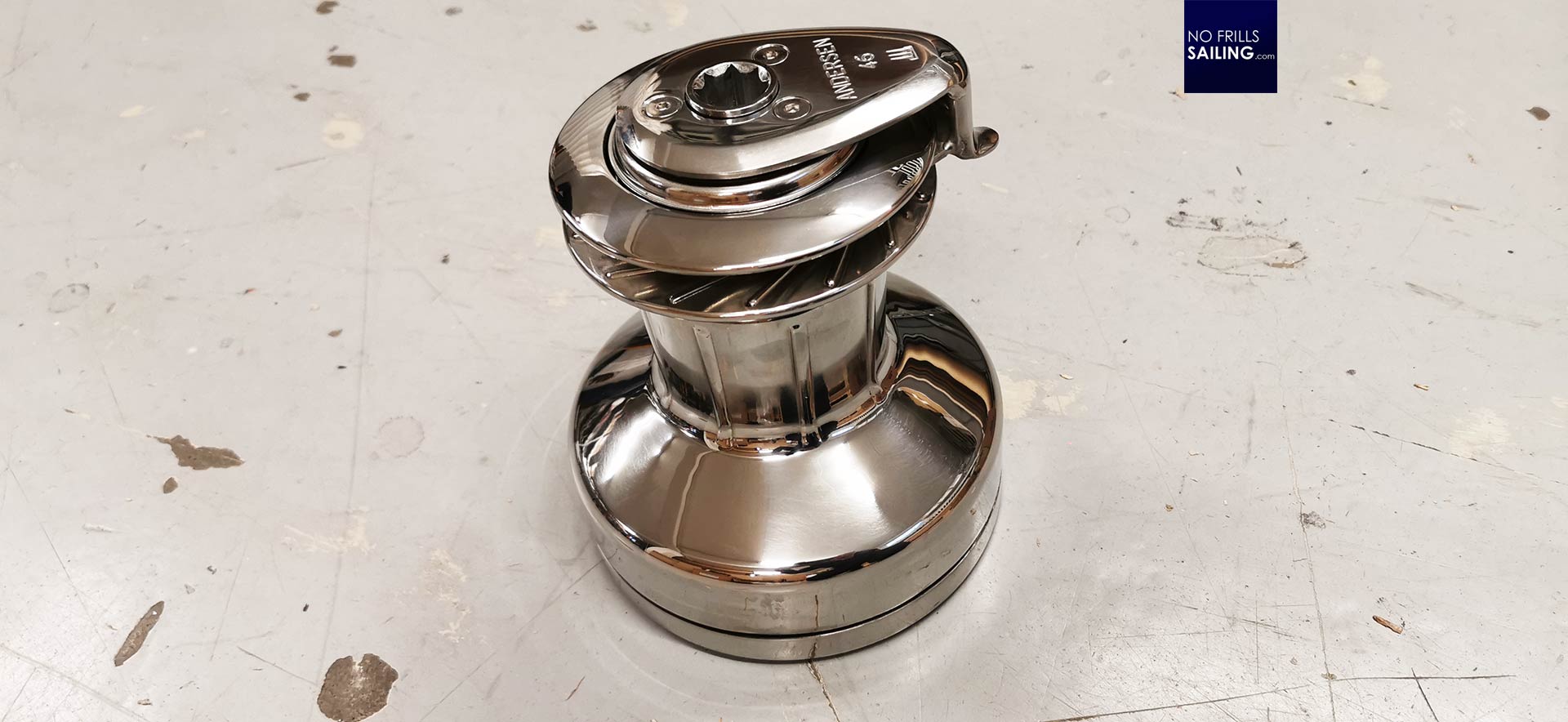
Two working winches left and right of the entry way down to the salon. Those are 40 size winches, meant to work the halyards, the Jib sheet and the mainsail trimming lines like for reefing. On the coamings in the cockpit I will have the massive size 46 Genoa winches mounted. Those will work the sheets for my light wind sails, Gennaker and Code 0. The main sail halyard winch is electrified, this huge 40 square meters piece of canvas is surely something I do not want to hoist by hand …
Rugged, heavy, high quality
I remember my first ever visit to X-Yachts in Denmark (read the article here) when these guys told me – with a mixture of pride and implicitness – that Andersen winches are a matter of course on their boats. It is surely a Scandinavian thing but Andersen winches also have a spotless reputation of being the “gold standard” of winches. At least the heavy quality when I held my first 46´ in my very own hands persuaded me …

The self tailing-arm can be easily unscrewed and rotated 360 degrees on top of the drum. Since the winch needed to be mounted in a specific direction in relation to the ship´s centerline, this feature is needed to make sure that the sheets and ropes enter the right way onto the winch. Also, underneath the winch, on the very bottom, a large (sealed) opening is visible: Each winch can be electrified with a retrofitting pack if needed. For ALPHA, I´ve just planned to fit one electric winch but it is good to know that a retrofit is possible without having to acquire a completely new winch.
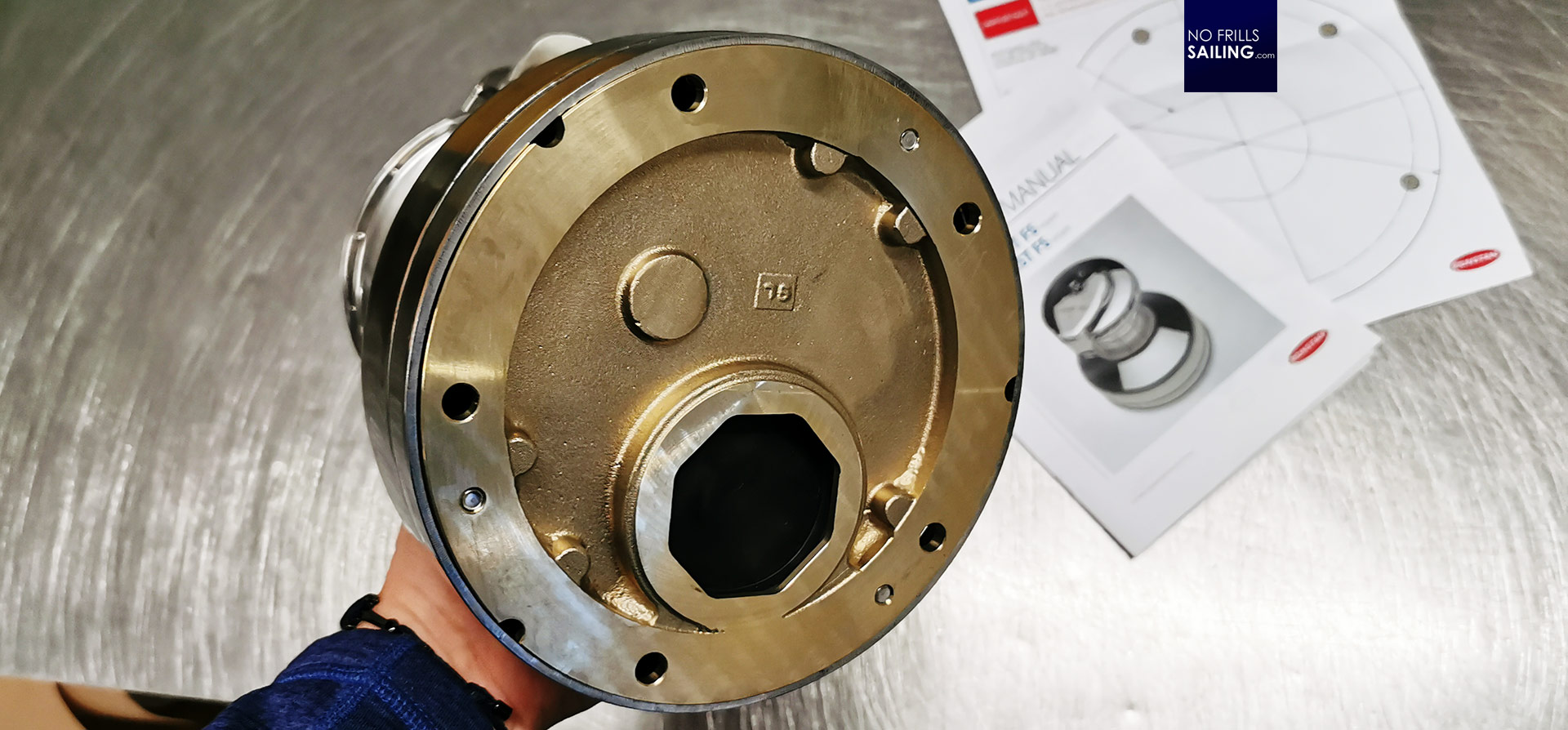
The feeling is indeed unique: There is a certain “aura”, let´s say, to touching metal, especially stainless and high grade metal. Just as it felt with the Ultra Marine anchor, the Andersen winch is “something”. It feels honest, real: No plastic, no strange hollow sounds. Instead, a thick, full-body “click” when the drum is turned, saturated, rich. I wonder if they have sound designers just as the carmakers have …
Low to no winch maintenance
Another key feature of Andersen winches is their low need for maintenance. As a sailing friend of mine put it: “I´d say you won´t have to service anything on an Andersen winch for the first 10 years or so …” After unscrewing the three pins holding the self tailing arm and taking it off, I was able to lift the drum-body itself. Underneath the simple yet ingenious gearbox became visible. Fascinating.

The winch offers two gears with a 2.8 : 1 respective 8.4 : 1 gear ratio with almost 16 and 48 times the power by gear reduction. Impressive! The inner mechanics are rock solid, no rattling nor slackness. I liked the appearance of the spring that secures the winch and thus the rope. Taking it apart that easy was a big relief for me: Even if there was, maintaining these winches won´t be that difficult.
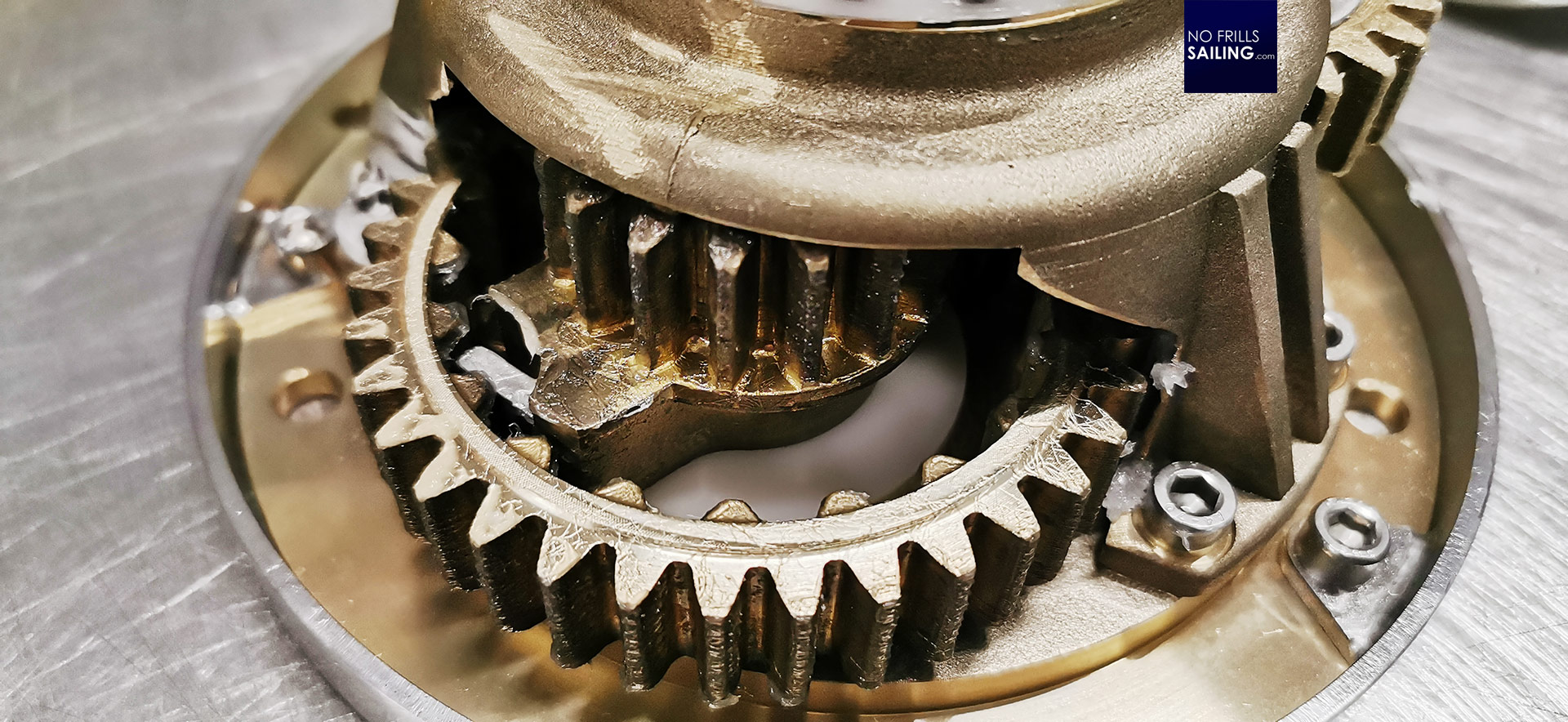
I could have spent another hour or so just admiring the art of this mechanical product. I mean, it´s like a clockwork, right? In a world that is increasingly digital, kind of rolling over itself with more and more “smart” technology, even on boats, looking at such a simple yet ingenious mechanical object is massively satisfying. There is so much knowledge in this small drum, Centuries of seafarers pulling ropes, engineers searching for devices to make pulling easier – this is the pinnacle of a story that started long ago when the sheet was invented, a rope to adjust the sail´s angle to the wind.

I admire the spotless quality, the heavy weight and the saturated sound. Imagining myself fast forward 12 months, aboard a then finished Omega 42 sailing my first couple of hundred miles – I am sure I won´t recognize those winches by then with the same enthusiasm as I do now as they surely will have become a common sense tool for sailing by then, nevertheless, I hope I will still be able to see the beauty in their timeless simplicity.
Another step forward for the Omega 42
Now, what´s the status of ALPHA right now in the shipyard? As I wrote in my previous article, not much has changed over the past weeks in November for various reasons, but building resumed last week and I will visit her in the coming week. The first bulkheads will have been fitted by then and some will be under construction: A detail I am very keen on documenting. For now, I am happy to have the silver drums at hand.

Thinking back on the very first day when building process started, I look at the picture above showing the plain white deck. So much to plan and to decide, still! After the winches are done, the next big item on my list is the deck surface itself. I am pretty sure that I won´t have real wood (neither Teak nor any other substitute timber), but this is the next big question: EVA-foam decking for a modern look? Or a synthetic Teak-imitation for maintaining the classic looks? Well, we will see. So much is clear: The timeless Andersen winches will be matching any of the mentioned materials for sure.
You might as well be interested in those articles:
At Wempe chronometers: History meets high precision
How it´s made: A life jacket
Making of a composite steering wheel
